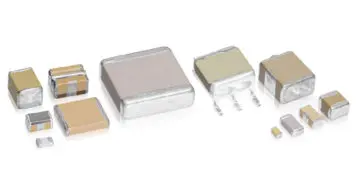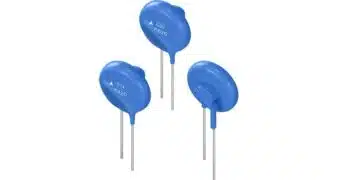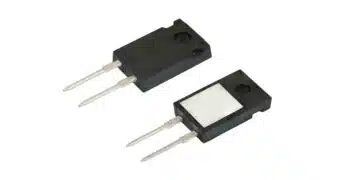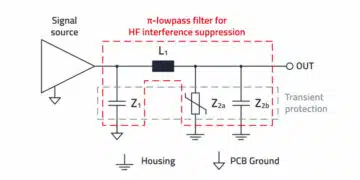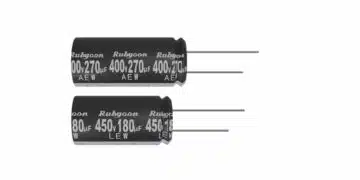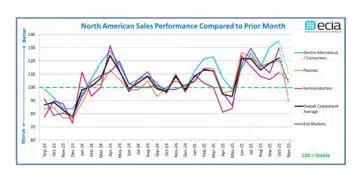This paper COTS-Plus / Alternate Grade bulk capacitor for LEO flight Platforms was presented by Slavomir Pala, KYOCERA AVX during the 5th Space Passive Component Days (SPCD), an International Symposium held from October 15th to 18th, 2024, at ESA/ESTEC in Noordwijk, the Netherlands. Published under permission from ESA SPCD organizers.
Introduction:
The evolution of satellite technology has led to increased demands on hardware performance, efficiency, and cost-effectiveness.
Central to this development is the role of power conversion systems, where bulk capacitors play a crucial role. This article by Slavomir Pala and Ron Demcko explores the application of COTS-Plus and alternate grade bulk capacitors, particularly the TBJ tantalum capacitor series, within Low Earth Orbit (LEO) flight platforms.
The focus is on their design, construction, performance parameters, and suitability for modern satellite power systems.
Key Points:
- The growing trend towards using COTS (commercial off-the-shelf) components in satellite design.
- Construction and historical evolution of tantalum capacitors.
- Performance characteristics and reliability grades of tantalum capacitors.
- Introduction of TBJ series capacitors tailored for LEO satellite missions.
- Detailed screening and testing procedures ensuring reliability in space applications.
- Advantages of TBJ capacitors in power distribution and system optimization.
Extended Summary:
The satellite industry faces relentless pressure to adapt to rapidly changing technological landscapes and customer demands. Modern satellites, equipped with powerful semiconductors, require efficient and reliable power systems. Bulk capacitors, essential for voltage stabilization and energy storage, are pivotal in achieving these performance goals. The article introduces the trend of incorporating COTS and alternate grade capacitors due to their cost-effectiveness, availability, and robust performance when appropriately screened.
Tantalum capacitors have been integral to electronics since the 1950s, appreciated for their high capacitance-to-volume ratio, stability across temperature ranges, and reliability. The construction of these capacitors involves a tantalum anode with a dielectric layer of tantalum pentoxide, and a manganese dioxide cathode, providing self-healing properties that enhance longevity.
The TBJ series, a focus of this article, represents an evolution in capacitor design tailored for LEO satellite power systems. These capacitors offer advantages like low weight, high capacitance, and low Equivalent Series Resistance (ESR), which are critical for minimizing ripple voltage and maximizing power efficiency in satellite processors. The TBJ series is derived from the MIL-PRF-55365 standard but incorporates COTS-Plus attributes with enhanced screening protocols to ensure space-grade reliability.
Testing for the TBJ series includes rigorous procedures such as thermal shock, surge testing, and electrical parameter validation. The SRC8000 and SRC9000 screening matrices are designed to meet the stringent demands of LEO and high-priority space missions. These tests enhance the reliability of TBJ capacitors, making them suitable for mission-critical applications where failure is not an option.
In practical applications, TBJ capacitors contribute to efficient power distribution in satellite systems, supporting various components like solar panels, battery management units, and high-power processing boards. Their design allows for flexible integration, with options to adjust screening requirements based on specific mission needs.
Conclusion:
As LEO satellite missions continue to expand, the need for reliable, efficient, and cost-effective power components becomes more pronounced.
The TBJ series tantalum capacitors offer a balanced solution, combining the benefits of COTS components with enhanced screening to meet space-grade requirements. Their performance, reliability, and adaptability make them invaluable in advancing satellite technology, supporting the growing demands of modern space missions.
Read the full paper:


